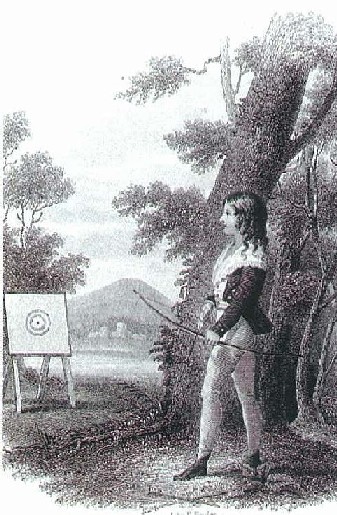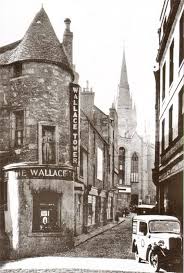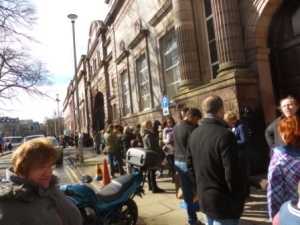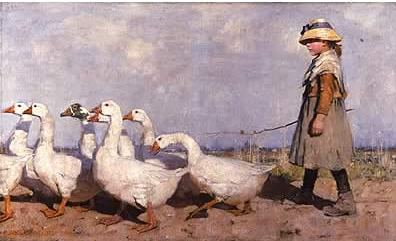Black shirts in Aberdeen
FASCISTS “DROWNED OUT”
NOT ALLOWED TO SPEAK
PANDEMONIUM AT ABERDEEN
——————–
BELLOWED FOR NEARLY HOUR
REDS OUT IN FORCE
It was the Reds doing the bellowing. The occasion was an attempt by Mosley’s British Union of Fascists to speak at Aberdeen’s Music Hall in September 1935.

Raven Thomson front low left
“They may be croaking like old hens, but their bellowing and braying last night completely drowned out the voice of Fascism in the Ball Room of the Music Hall” reported a local newspaper. Such was the vocal opposition to the extreme rightwing Black Shirts, the report went on, the meeting ended almost the moment it opened. The would-be guest speaker that evening was to be A. Raven Thomson, the BUF’s Director of Policy but before he could utter a sound he and his fellow fascists were given the bum’s rush.
“Aberdeen is the toughest town we have ever struck,” Thomson told the paper’s reporter.
The public address was due to begin at 8pm but an hour before the hall was already packed with a couple of thousand more outside, unable to get in.
Protected by ten black-shirted stewards from Peterhead, Edinburgh and Manchester the Fascists took their seats to a wall of sound of booing and shouting from within the hall. Plain clothes police officer sat amongst the audience and they, too, were loudly booed.
The moment the speaker Raven Thomson got onto the stage and appealed for quiet he was drowned out by a huge roar and a sea of shaking fists. Someone stood up and waved a red flag which set off a rendering of the socialist anthem, the International followed by more noise and chants of
“One, two, three, four, five,
We want Mosley, dead or alive.”
Thomson tried to press on but his words were totally drowned out with no break in the racket from the public in the hall. At 8 o’ clock the Chief Constable, McConnach, had a word with the Fascists then announced the meeting was cancelled. Wasting no time the Fascists hurried away to the delight of excited demonstrators roaring
“Three cheers for the defeat of Fascism.”
Outside a large force of uniformed and plain clothes police were gathered in anticipation of trouble but the protestors; Communists and Socialists as they were described by the press, were in no mood for violence but “swarmed down Union Street, marched to the Market Stance, singing the ‘Internationale‘ and other Communist songs on the way” and held their own meeting at the Castlegate.

Raven Thomson
Raven Thomson issued a statement in which he said the Fascists had had several successful meetings on their tour of the country but – “It is very difficult to deal with a town like this where the people do not know our case” adding the reaction they had in Aberdeen was unusual and the city was “the toughest town they had ever struck.”
Edinburgh born Raven – Alexander Raven Thomson – was a theoretician of the British Union of Fascists and grandson of the architect Alexander (Greek) Thomson. One-time a member of the Communist Party he came to admire Nazi Germany and spent time in Germany learning the trade of silver paper manufacturing which later provided his living back in Britain. By 1933 he was a fascist and became the BUF’s Director of Policy and close associate of leading fascists Oswald Mosley and Neil Francis Hawkins. He was interned in Brixton jail for most of the Second World War and remained a fascist all his life. He married Lisbeth, daughter of the x-ray pioneer, Wilhelm Röntgen, and they lived in the East End of London where he died in 1955.
Chief Constable McConnach was criticised by the anti-Socialist and anti-Communist Union for his handling of the Music Hall meeting. He responded saying the Fascist speakers had been given police protection and suffered no violence in Aberdeen but that he would not put up with speakers being obstructed in future. And he had advice for organisers of meetings, such as the Fascists, that any complaints against the police should be pursued through the courts. In the event the Fascists chose not to pursue their complaint as they didn’t want to appear in court in case what came out damaged their reputation it was said. They did, however, complain in one of their publications of “Mob Rule in Scotland” – indicating only at Aberdeen and Dundee had the British Union of Fascists suffered such disorderliness but they also mentioned they dared not hold meetings in Glasgow after dark.
DUNDEE
The following week the Fascists’ tour of Britain found them in that other most disorderly city, the “Red city” of Dundee, where around 1,000 mostly Communists had already gathered for their own meeting knowing the BUF were due. Fascists G. Easterbrook and J. A. F. Nolan from London planned to speak but they and their fellow Blackshirts were forced into a hasty retreat chased by 500 Socialists. Some Fascists jumped onto a tramcar where Nolan was punched on the jaw, twice, and Easterbrook received a bloody nose before securing safe passage in a police van and driven away from the West Port area with shouts of “Down with the Blackshirts” and “Run them out of town” ringing in their ears – their planned 11 meetings during a week-long stay in Dundee cancelled.
At the time Nolan, insistent they were not Blackshirts but included Liberals and Conservatives, said their campaigns in Edinburgh, Ayr and Saltcoats got excellent hearings while in Aberdeen they’d encountered opposition though not as violent as in Dundee. Easterbrook was more blunt he condemned the reception in Dundee as “contemptible” and “un-British.”
It would be misleading to portray fascism as universally unpopular in Britain. Its ideology took root across Europe in the 1930s including in the United Kingdom. Indeed much of the British press were keen advocates of fascism: The Mirror and Sunday Pictorial were so tickled with fascism they proposed a prettiest woman fascist competition and published photographs of blackshirts having a sing-song around the piano. The Daily Mail’s owner Lord Rothermere welcomed Oswald Mosley’s moves to shake up Britain. On 8 January 1934 the Daily Mail editorial proclaimed –
“Hurrah for the Blackshirts!”

And Rothermere’s message to Britons was-
“Britain’s survival as a Great Power will depend on the existence of a well-organised party of the Right, ready to take on responsibility for national affairs with the same directness of purpose and energy of method as Hitler and Mussolini have displayed.”
And enthusiastic Daily Mail readers clamoured to join the fascist movement. At the Albert Hall in London that April 10,000 people crowded in to hear the movement’s leaders speak. Soon 100 branches of the fascist organisation had sprung up around the UK.
The British Fascist movement was led by the well-heeled Sir Oswald Mosley – an MP with wide interests – at times a Conservative, an Independent and member of the Labour Party he served in Ramsay MacDonald’s second Labour administration as Chancellor of the Duchy of Lancaster. After he resigned from Labour he was expelled and formed the New Party, a forerunner of the Union of Fascists.
Mosley favoured greater powers for the state in order to tackle unemployment and argued it should have more control over public assets. Unemployment was a huge problem in the UK in the thirties with levels of poverty and suffering hardly credible to us today. He wanted the UK to adopt the Italian type of fascism and become a corporate state of 24 bodies that would harbour no criticism, be governed by an elite elected through plebiscite every five years and replace local government with appointed representatives provided by the national government. In Aberdeen that man was to be William Keith Abercrombie Jopp Chambers-Hunter.
Despite the British Union of Fascists chiefly being London-based, in the East End in particular, its supporters endeavoured to create a UK-wide organisation. The biggest support outside of London was found in Liverpool and Manchester while efforts to spread their ideology into Scotland, intensified from 1936, were centred in Aberdeen. The simple reason for that was the presence of Chambers-Hunter, a fanatical fascist and his sister-in-law Agnes Evelyn Flora McDonald Botha – known as Mrs Botha (the last name might be familiar to you as she was a daughter-in-law of South Africa’s first Prime Minister, Louis Botha.) Chambers-Hunter was a laird at Tillery near Udny in Aberdeenshire who had been educated at public school in England, later spending time as a tea planter in Ceylon before returning to Scotland to live on the estate he inherited. His family’s fortune was made as plantation owners in South Carolina, the heart of slavery for around 200 years, in the 18th century. Chambers-Hunter, himself, was said to have come from a scion of the family born into less affluent circumstances, as the son of a grocer in Footdee (Fittie) and was formerly known as the more humble William Jopp. The family appear to have had a penchant for changing their names for his slave-owning grandfather was once Chalmers before adopting Chambers.
Chalmers-Hunter and Botha were determined fascists who didn’t allow adversity to come between them and their recruitment drive for the movement – and they had to be. Whenever and wherever they turned up Aberdeen’s anti-fascists quickly on hand to provide some opposition. That equal determination of the anti-fascists forced the local BUF from 1935 to stop publicising their appearances in advance instead they would turn up unannounced – most often at the Green, Craigie Street off George Street and Woodside where Chambers-Hunter would stick his head out of the sun roof speak briefly and perhaps sell copies of their newspapers Action and Blackshirt in the hope of getting away before being tracked down by the opposition – not easy for in the city an interesting network of anti-fascists emerged with eyes and ears open to their activities: bus and tram drivers and conductors; unemployed men and women on the streets and more organised groups of Communists and Socialists with bikes who got into the habit of cycling around the town searching out Blackshirts in their usual haunts. As for the residents of Craigie Street it was said the women there were quite capable of sending the itinerant fascists packing whenever they turned up on their doorsteps.
Harassing fascists became a popular activity in Aberdeen. Many of you will know that nineteen Aberdonians felt so strongly that fascism had to be resisted they went to Spain as part of the International Brigades to fight it in the Spanish Civil War. Five were killed in Spain.
Aberdeen being a major port meant Aberdonians came into contact with seamen from around the world, including Germany, and from them they learnt about the rise and progress of fascism across Europe and the imprisonment and murder of Socialists, Communists, Trades Unionists, Jews and so many others.
Communists used the town’s pavements to spread word of their meetings; writing time and place with bits of clay pipe – the habit of chalking messages on pavements lingered on among the city’s Socialists through to the 1960s CND, anti-Vietnam war movement.
The local press proved a lively medium for the exchange of political view. In March 1936 C. W. Edward of Sanquhar, Forres wrote in defence of fascism-
“Mr Chambers-Hunter’s excellent letter of February 28 voices the feelings of a vast number of people in Britain today.”
He went on to condemn the government’s treacherous attitude towards the USSR; its damage of trade through sanctions and risk of war so that “people of all political opinions are turning to Fascism as the only way out of the political morass in which we are floundering.”
His opinions were countered in the same paper by someone with the initials ACH who criticised Chambers-Hunter for his over-simplification of political situations –
“Russians are vermin (168 million people disposed of), Germany and Japan can squeeze them out of existence (No trouble!) Friendship with Russia means the ruin of the British Empire. (Shouldn’t it be the British Commonwealth of Nations?) …Fascism means the Union Jack —Nothing to do with the birch rod evidently…If a thinking man or woman refuses to accept any or all of these postulates, the shape of his or her nose may be taken as decisive evidence that he or she is wrong. – Drivelation. -A.C. H.”
Another correspondent sardonically ‘sided’ with the local fascist leader Chambers-Hunter and his opinions on the activities of Italy in Abyssinia.
“I was very interested in Mr Chambers-Hunter’s views on Italy’s great campaign, but I feel that he errs a trifle on the side of moderation.
It makes my blood boil when I think of the hindrances which have been placed on this great work of extermination, and I was only restrained by silly sentimentality from sending on my signet-ring to that saintly ascetic Il Duce to help him in his great work for civilisation.
The incredible bravery of the Italian airmen cannot be overpraised, considering the immense odds, but it is Marshal Badoglio who will live in history. His great feat of bringing about a series of glorious victories at a loss of a hundred thousand of the enemy to only a paltry thousand of his brave dare-devils marks him as one of the world’s greatest generals and mathematicians.
I remember when the Germans carried out an extermination campaign in their African colonies there was some talk, and the usual busybodies instituted a commission which allowed itself to be fooled by the usual lying stories…is not surprising therefore that misguided people even nowadays, no doubt influenced by lying “Red” propaganda, are squealing because some ****** women and kids happened to be slightly bleached by a harmless form of gas sent out to incapacitate the enemy camels from taking up supplies.”
It was signed Hero Worshipper.
Asserting its empirical claims to a piece of Africa, Italy had been engaged in converting natives of Adowa to their caring regime through machine gun diplomacy, bombing and spraying poisonous gas from aircraft to kill individuals, poison land and water.

Fascists and anti-fascists at Aberdeen’s Market Stance 1935
One evening in July 1937 Chambers-Hunter and Botha and others turned up in a van with four loudspeakers at the Market Stance at the Castlegate. The four speakers were intended to drown out expected shouts and barracking from those against them. The inevitable scuffles broke out and when someone tried to remove the loudspeaker cables he was arrested, along with others. Chambers-Hunter continued to speak for around half an hour under a barrage of missiles of stones, tomatoes and anything else to hand but was scarcely audible over calls for Mosley “dead or alive.”
Once the Fascists had left the Castlegate the crowd turned its attention to the police and their arrested comrades. At police HQ in Lodge Walk the police were ready for them lined up with batons drawn and there was a stand-off with pleas to release the arrested men on bail at the same time the Chief Constable insisted there would be no bail until people moved away from the police station. They did. Back at the Market Stance a large crowd remained and a collection was taken for bail money but the Chief Constable still refused to bail any of those detained.
Meanwhile a group of women arrived at Lodge Walk with food and drink for the men who they insisted all required special treatment. There were no files concealed in cakes but the men were allowed coffee, sandwiches and rolls provided by the women. One man used his sandwich bag to scribble a note which he hid in the dry lavatory in his cell. Next morning the note went to court along with the accused. As they were leaving the dock he threw the screwed up paper to the public benches but it was picked up by a detective.
Following their court appearance the men were taken to Craiginches prison where the governor tried to intimidate them, according to one of the arrested, Duncan Robertson.
“Stand to attention when you talk to me!” the governor demanded.
“Will I buggery!” came Robertson’s reply.
And he didn’t and the governor didn’t try that again.
A few days later the men were released from Lodge Walk on bail to cheers from a welcoming group waiting outside. One of the detained, Bob Cooney, was carried on shoulders from Lodge Walk to Castle Street where he addressed their supporters. Cooney had been assigned leader of the men by the police who always insisted there must be a leader. In their subsequent court appearance, Cooney was fined £10, being leader, and the others around £3 by Sheriff Laing. The average weekly wage for a skilled man at the time was around £3. Of the nine on trial, two were found not proven and others guilty of obstruction or assaulting the police. In all their fines amounted to £100, a great deal of money for working class heroes.
Following the Battle of Cable Street in London in October 1936 the Westminster government passed a Public Order Act on Jan 1, 1937 which handed greater powers to the police to control demonstrators and enable easier prosecution of hecklers who could be charged with disturbing the peace – a charge frequently employed in Aberdeen by fascists confronted by opposition so providing them with free rein to promote their propaganda unhindered and unchallenged for any who dared shout out could be pointed at and duly arrested with the prospect of being fined a whole week’s pay.
On 23rd October 1937 eight Aberdonians were before the sheriff on charges of acting in a disorderly manner at a meeting of fascists at Woodside. The public benches were filled with their cheering supporters who received a warning from the sheriff. Outside the court the fascists were booed and jeered and given police protection.
And so the cat-and-mouse game between Left and Right continued with the Left always the ones sent to jail or fined.
Northeast fascists declared they had considerable support in Scotland – for example 200 members by 1933 in Motherwell. In order to boost their numbers Chambers-Hunter and Botha worked tirelessly taking their message to Inverness, Banchory, Kemnay, Inverurie, Forres, Peterhead, Turriff, Oldmeldrum and Stonehaven as well as Aberdeen.
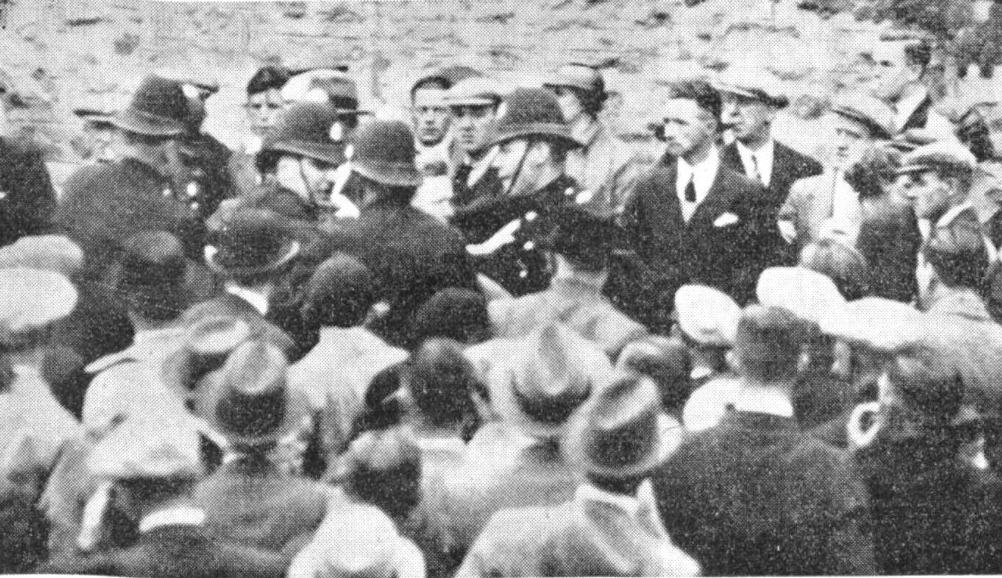
Scenes at the Market Stance where the BUF tried to speak 1937
In February 1937 the BUF were again at the Music Hall where the main speaker was their National Organiser in Scotland, Richard Plathen. Admission was by ticket only, sold by younger members. Local communists managed to buy a few before their ruse was discovered and a block placed on them obtaining more but the young fascists, not being over-burdened with sense, left the ticket box for a short time but long enough for the Communists to get to it and help themselves. The result was plenty Communist and Socialist comrades were able to find their way into the meeting despite a general warning from the police to the Left to stay away.
The evening began as it ended – in uproar. Around 80% of the audience were hostile to the fascists and they didn’t hold back from expressing their disapproval of the BUF; singing and chanting that familiar refrain -“One, two, three, four…” to which the fascists reacted by singing God Save the King – provoking in turn a hearty rendering of the Internationale accompanied by the waving of a red flag by Communist George Esson.
And so throughout the thirties clashes between Left and Right continued with no real violence other than pushing and shoving, a great deal of noise and forceful expression of opinion. But one Sunday in July 1937 around 50 Communists interrupted a BUF rally at the beach Links. During the ensuing rammy missiles and punches were thrown and a vehicle damaged. This resulted in several weel kent faces among the Communist fraternity being picked up later at home and instructed to appear at an identity parade at Lodge Walk the following day. One who wasn’t obliged to go was prominent anti-fascist campaigner Bob Cooney who later in the year was to head off to Spain to fight fascism in the Spanish Civil War. However on the day of the Links rammy he was in Glasgow but that did not prevent him insisting he take part in the line-up – muddling up the order of men arranged by the police. Being such a familiar face he was immediately recognised by one of the fascists there to identify the man who allegedly assaulted his brother at the Links. He pointed at Cooney and insisted he was the assailant. As this was patently untrue the others in the line-up were allowed to leave after receiving a warning from the police to refrain from hindering fascists in the future, again. Cooney claimed he was approached and asked why he changed the position of men in the line-up which made some suspect an arrangement had been made to get a particular man or men.
On the fifth anniversary of the founding of the British Union of Fascists Aberdeen was chosen as the venue for their Scottish conference. As their van with delegates from Perthshire, Fifeshire and Edinburgh made its way along Union Street towards the Market Stance the waiting crowd surged forward and succeeded in pushing the vehicle backwards for a short distance. The police were ordered to draw their batons and the van, its windows protected by wire, was able to complete its journey. A local paper described the crowd being “in a very noisy mood.” At the Market Stance Chambers-Hunter attempts to address the gathering were once again silenced despite his use of loudspeakers. The newspapers reported that little could be heard of his speech as it was drowned out by the ‘red rabble.’ Once again the fascists appealed to the police for protection before abandoning their pitch. As for the anti-fascists they met later on, in the Music Hall, at a high spirited meeting at which the principal speaker was the Communist Willie Gallacher.
The role of the police handling demonstrators was raised in the council chamber in October of 1937 with claims that they assaulted people in Aberdeen.
“The police seemed to run amok”
“The police concentrated on free speech for the fascists and threw overboard a score of other…rights of the public. Nothing mattered but to preserve the right of free speech for the fascists.”
(P&J 7 Oct 1937)
A complaint went to the Secretary of State for Scotland but was taken no further. In defence of police action it has to be said without their presence it is likely there would have been more injuries, to fascists at least, for tensions and tempers ran hot and wherever the fascists turned up their vehicles were set-upon and rocked, usually fairly gently. On one notable occasion, however, a fascist meeting had been arranged in Torry and people were again out in force with lots of yelling, fireworks and missiles. The police were also on hand but interestingly refrained from intervening until the crowd had toppled the fascists’ car was onto its side.
The worm had turned. Without police protection the fascists had to face up to the anger they provoked among Aberdonians. Unable to get to a public spot to speak from in Torry because of the crush of a crowd of around 6,000 the fascists slipped along Sinclair Road and stopped at a coal yard, misguidedly. Pieces of coal became missiles to be hurled their way. The coal yard was also private property and the owner complained to the police who ordered them off. A furious Chambers-Hunter turned on the police inspector -“You bastard!” which might have proved unwise. But Chambers-Hunter was nothing if not thrawn.

Mosley visits Aberdeen
Oswald Mosley visited Aberdeen only once, on 22nd November 1937 where a luncheon was given in his honour in the Caledonian Hotel. The police blocked off the whole street to prevent demonstrators getting close to him. However, Aberdeen’s Communists were aye on the ba’. Painted in huge letters across the road, in full visibility of guests at the hotel read the message FASCISTS OUT
SIR OSWALD MOSLEY SAYS “FINE”
ran the Press & Journal headline
NOT PERTURBED BY ABERDEEN’S YELLING CROWD OF ANTI-FASCISTS
“Fine” the only comment Mosley is recorded as saying of his visit to Aberdeen.
The report claimed over 100 Aberdeen Fascists attended the luncheon. It is doubtful they all came from Aberdeen given the paltry numbers involved in their other activities but presumably were members who travelled near and far to touch the cloth of their leader.
The newspaper also reported the luncheon was disturbed by “continuous derisive shouts and the singing of the “Internationale” coming from Union Terrace, where a large crowd of anti-Fascists had assembled. Mosley’s address to the faithful centred on the wickedness of international Jewery and the fascist ambition to create a self-contained empire. At their lunch the fascists were subjected to catcalls which most ignored although one young woman did return the fascist salute.
Later, greater numbers gathered, having finished their work, to vent their feelings against the visiting fascists. When Mosley emerged from the Party’s base on Union Street he was faced by a “yelling and gesticulating crowd” and as he waited to for a flunky to open his car door he smiled towards those booing and gesticulating.
In July 1938
Anti-Fascist crowd demonstrate
Police Escort for Witnesses
Five Sentenced at Trial
“The trial on charges of breach of the peace and assault of five Aberdeen anti-Fascists, two of whom were sent to prison and the others fined, ended with a remarkable demonstration of anti-Fascist feeling at the door of the Aberdeen Sheriff Courthouse last night.”
The five told the court they had no religious beliefs and affirmed instead of taking the oath. They denied the charges, maintaining provocation by the Fascists who had shouted “One day Hitler and Franco would conquer the world, Hail Hitler, Join the Blackshirts, Keep Out Moscow and gave the Nazi salute.”
Lots of noise in the courtroom resulted in Sheriff Dallas warning that he would clear them from the court if they didn’t keep quiet. Witnesses came and went and the accused were found guilty.
Convicted were George Shepherd a salesman of Roslin Street and John Winton a sawyer of King’s Crescent both sent to jail for 30 days; Alexander Shepherd, son of George, also a salesman of College Bounds was fined £15 or 30 days in prison; Sydney Shepherd, labourer, of Bloomfield Road, another son of George Shepherd along with George Esson, labourer, of Chronicle Lane were each fined £3 each or 10 days in prison.
When their accusers William Keith Abercromby Jopp Chambers-Hunter and Agnes Evelyn Flora McDonald Botha of Tillery, Udny Station and Jane Imlah whose address was given at the headquarters of the BUF in Aberdeen on Union Street left the courthouse they were confronted by a large crowd, fists raised in the Communist salute shouting “Down with Fascism.” As the demonstrators surged forward the three fascists retreated into the building before being given police protection back to their car.
An appeal against these sentences was made to the Secretary of State for Scotland but went nowhere.
In October 1938 Chambers-Hunter addressed Aberdeen Round Table Club.
“The doctrine of Fascism simply was, “‘United we stand, divided we fall'” and went on to condemn international finance for skewing economies explaining Hitler was hated by international finance run by Jews for trying to break free of the “net of borrowing and lending” in order to make his country self-sufficient.
“Twenty-four years ago, if the Kaiser had walked up Union Street on a Saturday afternoon he would probably have been lynched. If the poor old gentleman were to do so now, probably no one would recognise him, or if they would not worry about him.”
He told his audience he had fought during the war in the Cameroons and German Togoland and the natives there were treated as well as in Ceylon where he’d also lived as a planter and in fact the natives of Cameroons and Togoland were “devoted to their German masters.”
Which I suppose is why the Germans required an army to protect their interests there. To explain further – the extent of German popularity in East Africa can be illustrated by the Maji Maji War fought over resentment of enforced labour, heavy taxes and violent repression responsible for destroying the lives of so many and devastating the area’s social fabric. German imperialists adopted a scorched-earth policy of punishment and control along with horrendous brutality and cruelty – much like, it should be said, practised by other western powers to their shame.
Germany, along with other European states, undertook what was known as the Scramble for Africa – carving up the continent to stake their claims to areas they regarded ripe for exploitation, to appropriate and control their colony’s natural wealth and resources from precious metals to bananas, cacao, coffee and cotton.
And so for years the clashes between Left and Right were unrelenting. Then something happened – as atrocities carried out in the name of fascism across the world came to be taken more seriously mainly for the threat fascism posed to the UK so support for fascism began to lose its vigour. In 1939 Aberdeen’s own fascist Chambers-Hunter retired from politics presumably exhausted from the uphill struggles he encountered on each occasion he went public and in addition he had spent huge sums of his own money supporting the BUF. In June that year Chambers-Hunter’s country house at Udny burnt down.

Driven out of his home by fire Chambers-Hunter, his wife and Mrs Botha
As for the Left there ranks were split by the Molotov-Ribbentrop Pact (Nazi-Soviet non-aggression Pact) signed between Germany and the USSR in August 1939. At the start of the Second World War Stalin argued it was not an anti-fascist struggle but an imperialist war but then came Operation Barbarossa when the Soviet Union was invaded in 1941 and dragged it into the conflict. At that point the Left forgot their differences to defeat the fascist states of Germany and Italy. Of course the Left had already been destroyed in Spain where a form of fascism survived until 1975 … at least.
Sources: Aberdeen newspapers; Fascism in Aberdeen – Street Politics in the 1930s (Aberdeen People’s Press.)









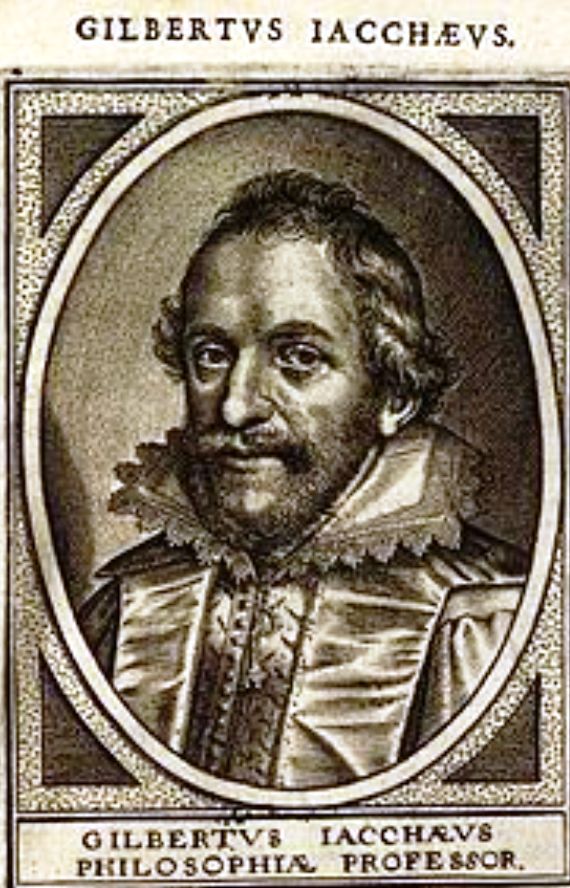 I don’t remember when I came across Gilbert Jack of Aberdeen. His name came up when I was scraning for something else. And not only his name but countless names of fellow Scots who became major figures in universities across Europe in the study of philosophy and medicine. I’ve thrown in medicine because the development of medicine in Scotland grew out of the close interaction between universities and colleges across Scotland and abroad and in any case Gilbert Jack was also an MD, having taken his medical degree at Leyden at the same time he was teaching there; his dissertation was on epilepsy – De Epilepsia.
I don’t remember when I came across Gilbert Jack of Aberdeen. His name came up when I was scraning for something else. And not only his name but countless names of fellow Scots who became major figures in universities across Europe in the study of philosophy and medicine. I’ve thrown in medicine because the development of medicine in Scotland grew out of the close interaction between universities and colleges across Scotland and abroad and in any case Gilbert Jack was also an MD, having taken his medical degree at Leyden at the same time he was teaching there; his dissertation was on epilepsy – De Epilepsia. 






